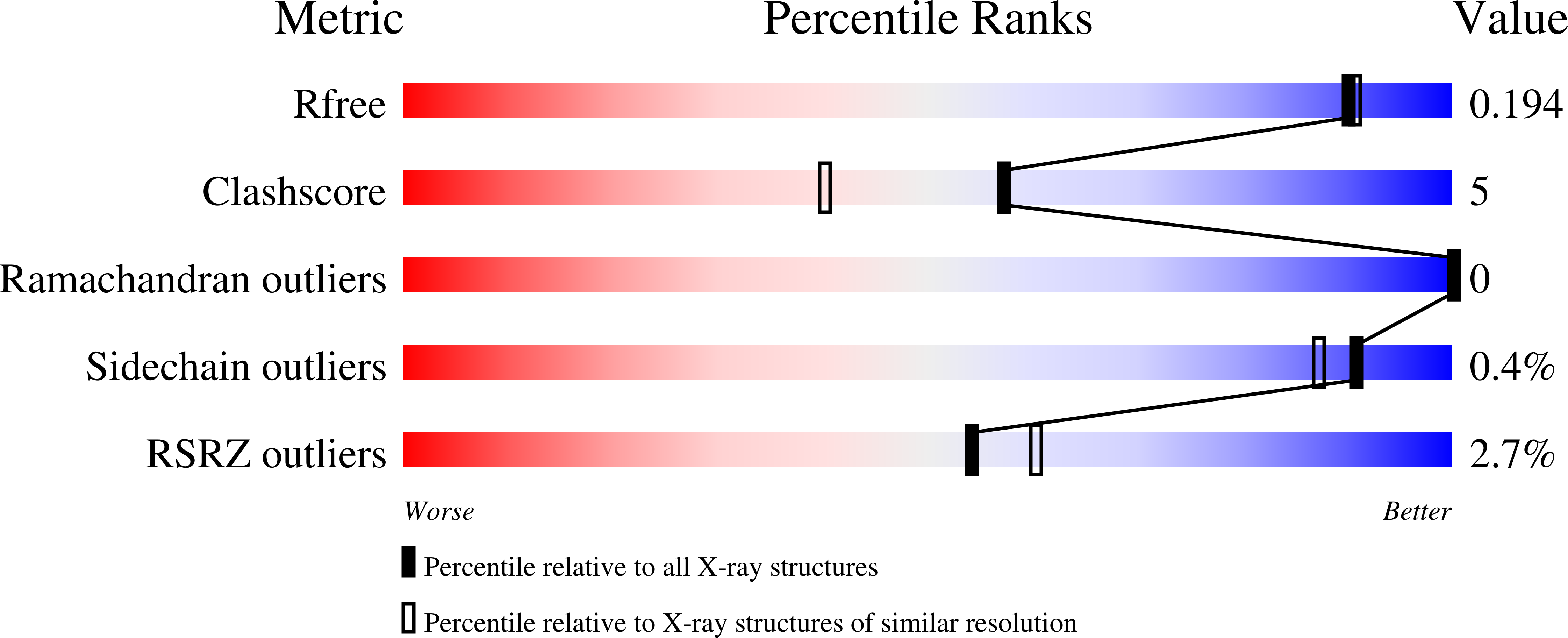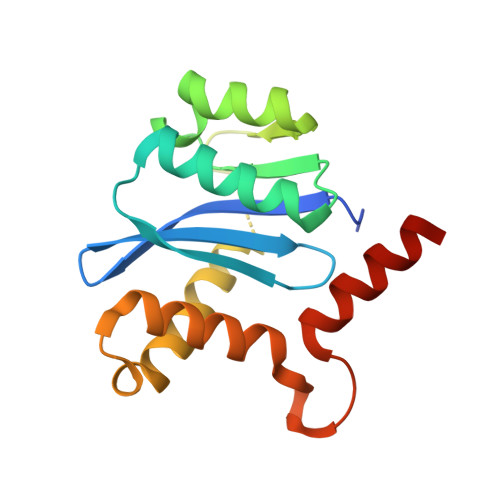Resistance to pyridine-based inhibitor KF116 reveals an unexpected role of integrase in HIV-1 Gag-Pol polyprotein proteolytic processing.
Hoyte, A.C., Jamin, A.V., Koneru, P.C., Kobe, M.J., Larue, R.C., Fuchs, J.R., Engelman, A.N., Kvaratskhelia, M.(2017) J Biol Chem 292: 19814-19825
- PubMed: 28972144
- DOI: https://doi.org/10.1074/jbc.M117.816645
- Primary Citation of Related Structures:
5JL4 - PubMed Abstract:
The pyridine-based multimerization selective HIV-1 integrase (IN) inhibitors (MINIs) are a distinct subclass of allosteric IN inhibitors. MINIs potently inhibit HIV-1 replication during virion maturation by inducing hyper- or aberrant IN multimerization but are largely ineffective during the early steps of viral replication. Here, we investigated the mechanism for the evolution of a triple IN substitution (T124N/V165I/T174I) that emerges in cell culture with a representative MINI, KF116. We show that HIV-1 NL4-3(IN T124N/V165I/T174I) confers marked (>2000-fold) resistance to KF116. Two IN substitutions (T124N/T174I) directly weaken inhibitor binding at the dimer interface of the catalytic core domain but at the same time markedly impair HIV-1 replication capacity. Unexpectedly, T124N/T174I IN substitutions inhibited proteolytic processing of HIV-1 polyproteins Gag and Gag-Pol, resulting in immature virions. Strikingly, the addition of the third IN substitution (V165I) restored polyprotein processing, virus particle maturation, and significant levels of replication capacity. These results reveal an unanticipated role of IN for polyprotein proteolytic processing during virion morphogenesis. The complex evolutionary pathway for the emergence of resistant viruses, which includes the need for the compensatory V165I IN substitution, highlights a relatively high genetic barrier exerted by MINI KF116. Additionally, we have solved the X-ray structure of the drug-resistant catalytic core domain protein, which provides means for rational development of second-generation MINIs.
Organizational Affiliation:
From the Center for Retrovirus Research and.















